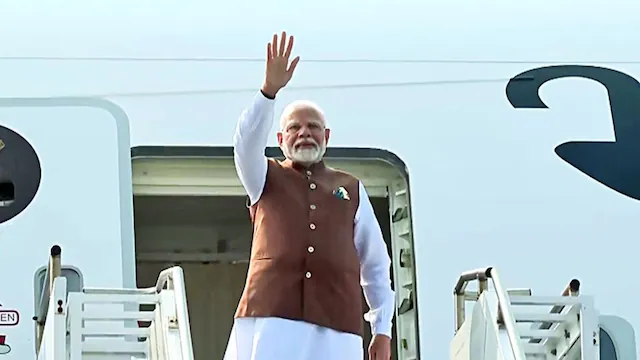Ayodhya's Ram Temple: A Symbol of Controversy and Conviction
- MGMMTeam

- Mar 1, 2024
- 4 min read
In the heart of Ayodhya, a city steeped in millennia of religious history and cultural significance, a monumental event unfolded as Indian Prime Minister Narendra Modi led the consecration of the highly contentious Ram Temple on 22 Jan. The inauguration marked a pivotal moment in India's socio-political landscape, stirring a plethora of reactions from various quarters of society.
The temple's significance is deeply rooted in the religious beliefs of India's Hindu population, who have long harbored the desire to witness the construction of a grand edifice honoring Lord Ram, a revered figure in Hindu mythology. The land on which the temple stands holds historical significance, having been the site of the Babri Mosque until its demolition in 1992.
The movement to build the Ram Temple gained momentum over decades, galvanizing support for Modi's Bharatiya Janata Party (BJP), which had promised to fulfill this aspiration of the Hindu populace. The Supreme Court's 2019 ruling granting the land to Hindu plaintiffs further fueled the fervor, leading to the commencement of construction on the temple.
The ceremony, attended by over 8,000 individuals including dignitaries, actors, and athletes, culminated in the unveiling of a black stone idol of Lord Ram. However, amidst the grandeur and celebrations, the event was not devoid of controversy.
The absence of two out of four shankaracharyas, prominent Hindu religious leaders, raised eyebrows and provided ammunition for the opposition to critique the BJP's politico-religious agenda. While some shankaracharyas cited failure to adhere to religious norms, others expressed reservations about the perceived political overtones of the event, particularly Modi's presence in the sanctum sanctorum.
The incomplete state of the temple complex also drew attention, with critics questioning the timing of the inauguration and highlighting concerns about the temple's grandeur and adherence to religious guidelines. Despite efforts by the temple trust to expedite construction, significant work remains, prompting skepticism among devotees and priests alike.
Ravi Kanth Tiwari, who was present during the Masjid’s demolition , expressed dissatisfaction with the incomplete state of the temple, emphasizing the need for a more visually appealing structure. Similarly, Prakash Kumar, a site engineer at Tata Consultancy stated that the entire Mandir complex wouldn't be finished until 2027.
The temple's inauguration has also sparked debates about its political ramifications, with proponents lauding it as a historic achievement for Hindu identity and Modi's leadership. However, critics view it as a tool for consolidating Hindu nationalism and electoral gains, raising questions about the BJP's motives and the secular fabric of Indian democracy.
The divergent views within Ayodhya's religious community reflect the complexities surrounding the temple's construction and inauguration. While some priests express reservations about the timing and scale of the event, others prioritize the fulfillment of Lord Ram's "homecoming" over structural concerns.
As the temple complex continues to take shape, it serves as a reminder of the enduring complexities and contradictions that define India's socio-cultural landscape. Whether viewed as a triumph of faith or a political maneuver, the Ram Temple stands as a testament to the enduring legacy of belief and devotion in the world's largest democracy.
The involvement of high-ranking BJP officials and the presence of international dignitaries at the ceremony highlighted the event's political significance. The BJP has long championed the cause of the Ram Temple, positioning itself as the guardian of Hindu interests and leveraging religious sentiment to bolster its electoral fortunes.
Amidst the reservations expressed by some, a prevailing sentiment among many priests in Ayodhya is that the prospect of the infant Ram deity finally having a "home" supersedes concerns about the incomplete state of the temple.
Ashok Das, 63, who migrated to Ayodhya from Bihar at a tender age and now serves as the head priest of the Sheshavtar Lakshman temple near Ram ki Pauri, reflects on the situation.
"It would have been preferable if the consecration occurred after the temple's completion,"
he remarks.
"Though it's not ideal, the deity can reside within the temple premises. His devotees can still worship him, and construction can proceed simultaneously. It's acceptable."
Santram Das, 80, a senior priest at the centuries-old Hanumangarhi temple, dismisses criticisms with a metaphor commonly used in Ayodhya.
"I live comfortably in my house. But my bhagwan – he resides in a tent,"
he quips, alluding to the makeshift temple housing the older idol.
"This isn't suitable. Let him be moved inside, and construction can continue."
Prem Narayan Das, 36, the head priest at Sudama Bhawan in Ramkot, perceives no political undertones in the ceremony.
"The pran-pratishtha is happening because it aligns with Ramji's wishes,"
he asserts.
"Modiji and Yogiji are merely instruments of those wishes."
These sentiments underscore the complexities surrounding the temple's inauguration, where religious faith intersects with practical concerns about construction timelines.
The controversy surrounding the Ram Temple reflects broader debates about the role of religion in Indian politics and society. As India grapples with the challenges of modernization and globalization, questions about identity, secularism, and pluralism have become increasingly salient.
In conclusion, the inauguration of the Ram Temple in Ayodhya represents a significant moment in India's history, with far-reaching implications for its politics, society, and culture. While proponents celebrate it as a triumph of faith and identity, critics warn of the dangers of mixing religion and politics and urge a more inclusive and pluralistic vision for the country's future. As the temple complex continues to evolve, it will remain a symbol of both division and unity, reflecting the complex tapestry of beliefs and ideologies that define contemporary India.




Comments